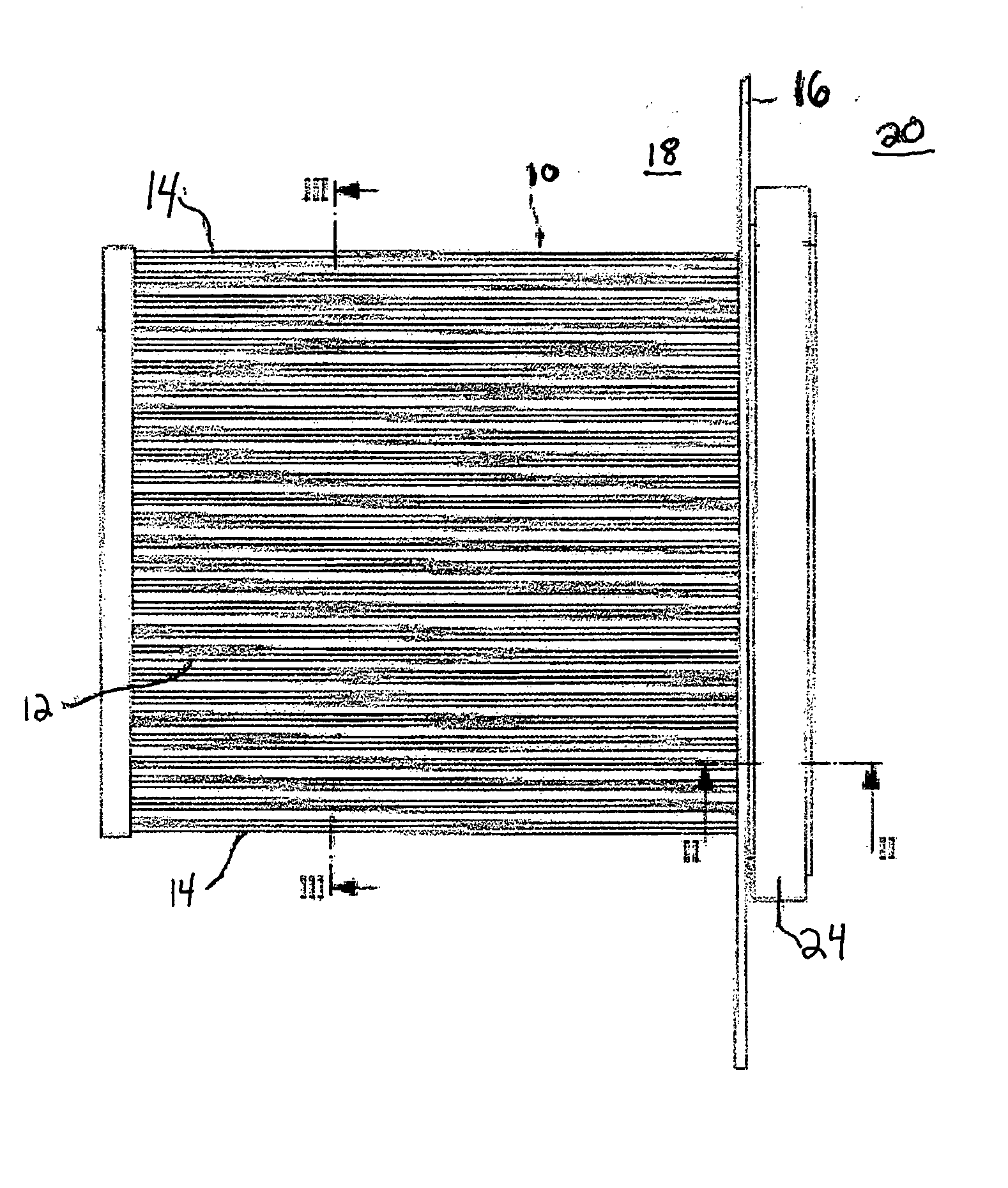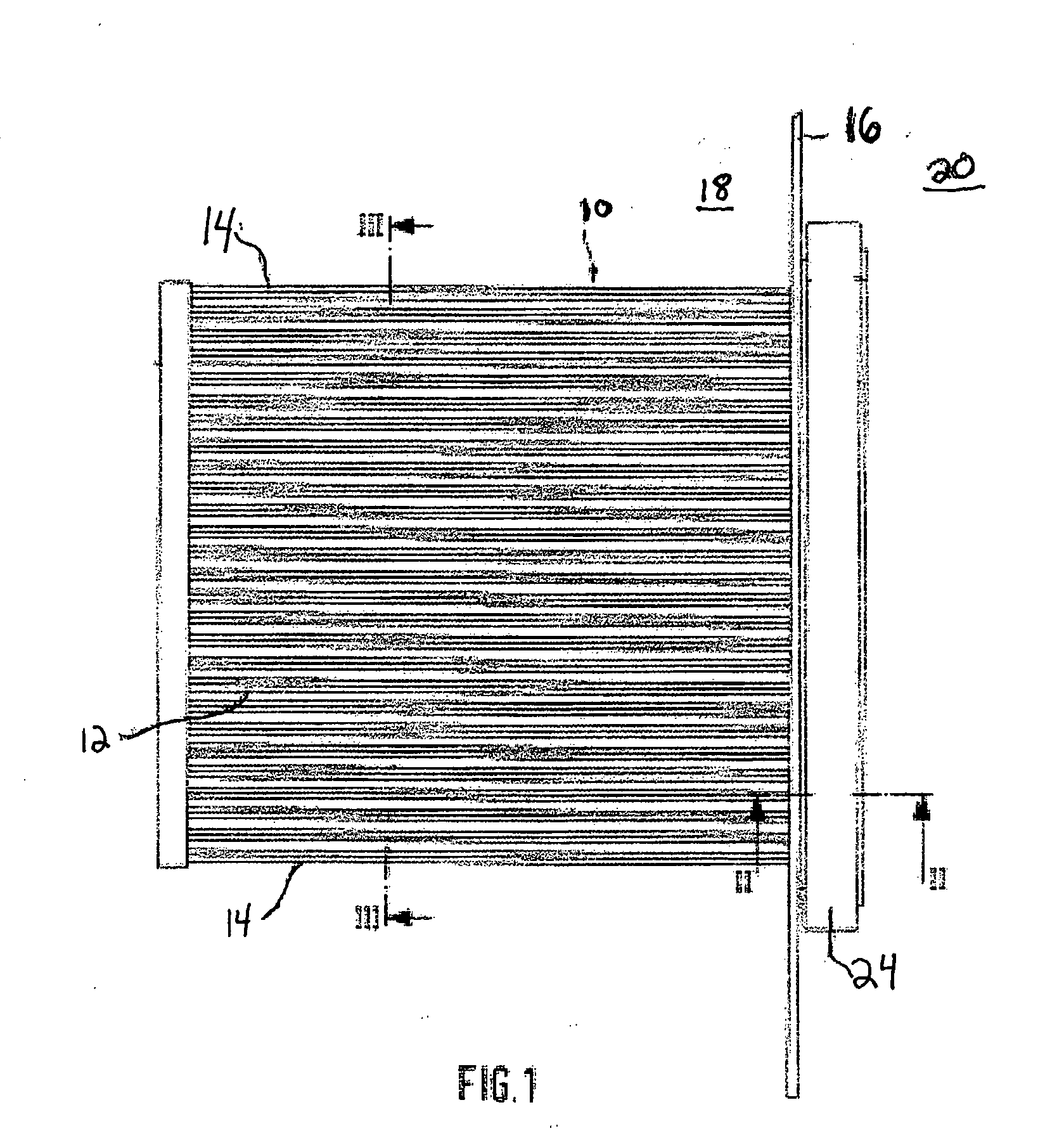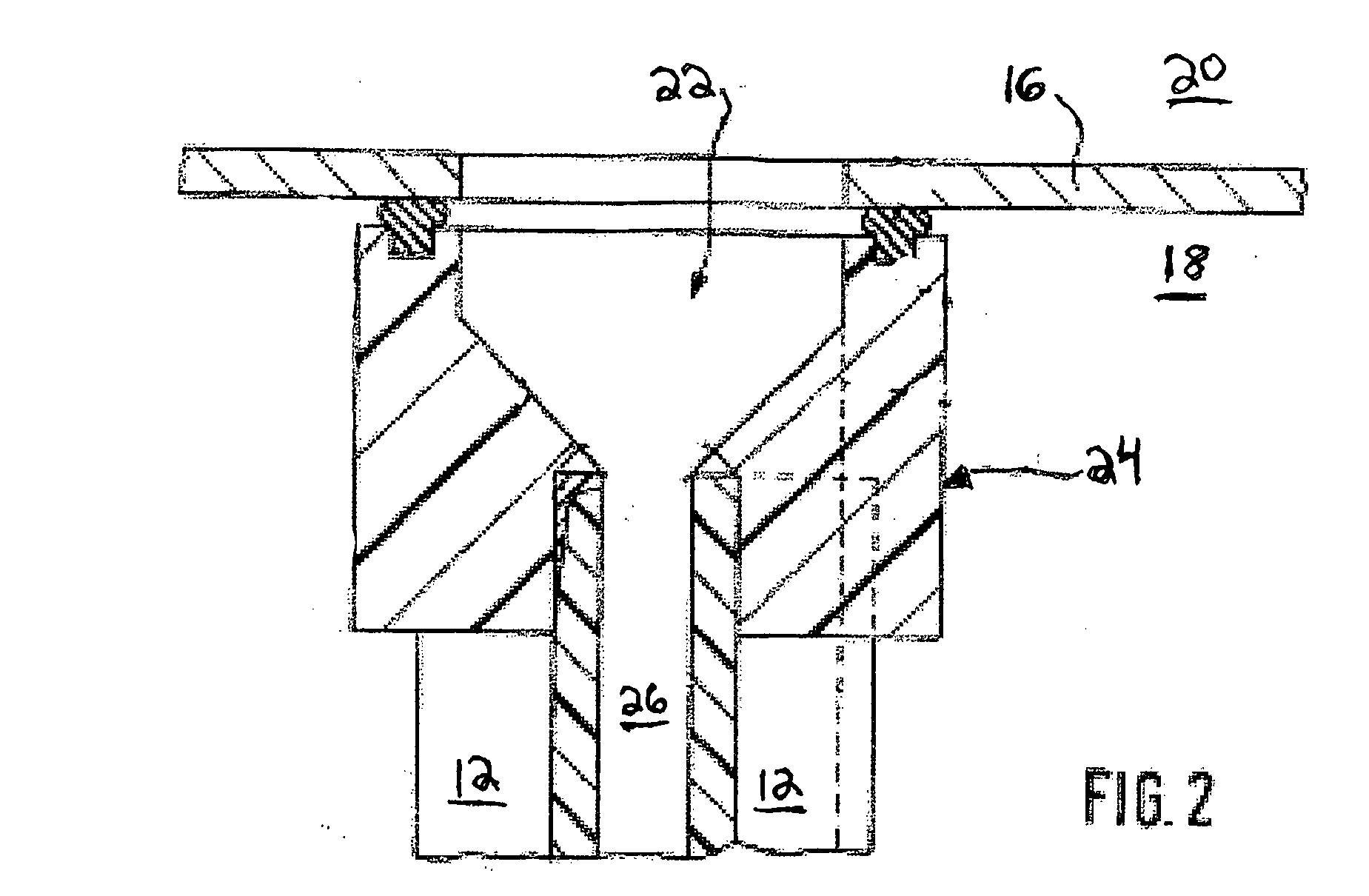Polyethylene Molding Powder and Porous Articles Made Therefrom
a technology of polyethylene and porous articles, which is applied in the direction of thin material processing, transportation and packaging, etc., can solve the problems of narrow processing window with respect to time and temperature, increase the quality inconsistency of molded products, and reduce porosity, so as to achieve the effect of expanding and softening the polymer
- Summary
- Abstract
- Description
- Claims
- Application Information
AI Technical Summary
Benefits of technology
Problems solved by technology
Method used
Image
Examples
examples 1-5
[0059] Porous plaques were produced by the free sintering process discussed above from the polyethylene powders of Polymer 1. The polyethylene powder was introduced into a mold, and the mold was heated according to the temperature listed in Table 2, below. The mold was held at the temperature for the time indicated. The shrinkage of the powder is indicated in the table below, as well as results for the porosity of the filter, the strength of the filter, and the pressure drop.
TABLE 2Molded Part PropertiesSinteringAverageFlexuralPressureMw × 106Temp.timeShrinkagePorositypore sizeStrengthdropExamplePolymer(g / mol)(° C.)(min)%%(μm)(MPa)(mbar)111.3220253.569581.274211.3220303.568541.154311.3220353.571631.134411.3240253.568691.144511.3260253.563691.105
PUM
| Property | Measurement | Unit |
|---|---|---|
| Temperature | aaaaa | aaaaa |
| Temperature | aaaaa | aaaaa |
| Temperature | aaaaa | aaaaa |
Abstract
Description
Claims
Application Information
 Login to View More
Login to View More - R&D
- Intellectual Property
- Life Sciences
- Materials
- Tech Scout
- Unparalleled Data Quality
- Higher Quality Content
- 60% Fewer Hallucinations
Browse by: Latest US Patents, China's latest patents, Technical Efficacy Thesaurus, Application Domain, Technology Topic, Popular Technical Reports.
© 2025 PatSnap. All rights reserved.Legal|Privacy policy|Modern Slavery Act Transparency Statement|Sitemap|About US| Contact US: help@patsnap.com



